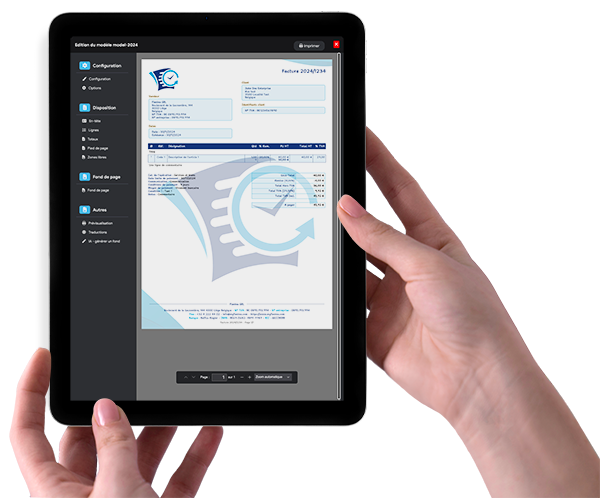Electronic invoicing is now mandatory in B2G (between businesses and administration) and will soon be in B2B (between businesses).
This article will explain in a simple but comprehensive way what electronic invoicing is and what are the advantages of using electronic invoicing right now.
What is the difference between a paper, digital and electronic invoice?
- A paper invoice: an invoice transmitted to the customer in paper format.
- A digital invoice: an invoice transmitted to the customer digitally, for example: sending a PDF by email, invoice download portal...
Paper invoices and digital invoices differ only in their mode of transmission and storage but are ultimately so-called classic invoices.
The problem with these two types of invoices is that they are difficult to process by a machine and processing the data from these invoices in commercial management and accounting requires manual encoding work that takes a lot of time and can generate errors.
Electronic invoicing was introduced to transmit an invoice to the customer securely (the equivalent of registered mail) in a format that can be reliably read by a computer to simplify the transmission, processing and automation of invoices.
An electronic invoice therefore differs from a digital invoice in that it is sent securely (Peppol network) and can be understood 100% by a computer without error (UBL, XML format).
What is the difference between the format of an electronic invoice (XML / UBL) and digital (PDF)?
The PDF format allows displaying and printing data, in this case a paper invoice but does not allow computer software to understand the meaning of its data. A computer will not be able to understand that a piece of data represents a VAT number, a subtotal or a total including tax for example.
The XML format solves this problem because it allows structuring the data contained in the file by adding a definition to them, it will thus be possible for software to understand and interpret without any approximation the invoice data in XML.
The Peppol 3 BIS, UBL, E-FFF formats... are XML file extensions that define a format and rules so that data is structured correctly in the XML file.
Brief Summary of the difference between a digital and electronic invoice
A digital invoice is a PDF format invoice that contains data intended to be viewed or printed.
An electronic invoice is an XML format invoice that contains structured data intended to be processed automatically by a computer program.
Why send an electronic invoice via the Peppol network rather than a digital invoice by email?
We won't go into the technical details of the Peppol network but rather explain its advantages in an understandable way.
You should see the Peppol network as a way to transmit electronic invoices securely, reliably with acknowledgment of receipt.
It's somewhat the electronic equivalent of sending a paper invoice by registered mail with acknowledgment of receipt.
The advantages of the Peppol network compared to sending by email are as follows:
- The sender and recipient are identified on the network to secure the sending.
- Data transmitted on the Peppol network is encrypted.
- Each sending and receiving of documents is tracked.
- You get an acknowledgment of receipt that guarantees you with certainty that your invoice has been sent and received by your customer.
With sending via the Peppol network, no more emails that arrive in spam, customers who say they haven't received the invoice to extend payment deadlines...
How can electronic invoicing improve the commercial management and accounting of my company?
For commercial management, it's simple: you'll no longer need to waste time searching for and scanning your paper invoices, logging into a dozen invoicing portals from your suppliers, browsing your emails to find digital invoices, using an OCR... : you'll receive your supplier invoices directly in your favorite commercial management software (Flexina of course ;-) and the data will be encoded automatically.
No more stress of finding attachments to send to your accountant before the VAT declaration, everything will be ready to send with a single click.
For accounting, electronic invoicing will also simplify the work of encoding sales and purchase invoices, your accounting software will analyze electronic invoices and facilitate the entry of your accounting by greatly reducing errors related to encoding.
Why switch to electronic invoicing today?
If you are a supplier to Belgian and Luxembourg administrations, it's more than recommended because it's mandatory to send B2G invoices electronically via the Peppol network.
In B2B, it's not yet mandatory but the number of companies switching to electronic invoicing is increasing exponentially every day to already fully enjoy the main advantages of electronic invoicing.
The electronic invoicing module of Flexina online invoicing software is already available in Belgium and Luxembourg and allows you to send and receive UBL invoices via the Peppol network and transmit your invoices in UBL format (peppol and ubl.be) to your accountant with a single click.




